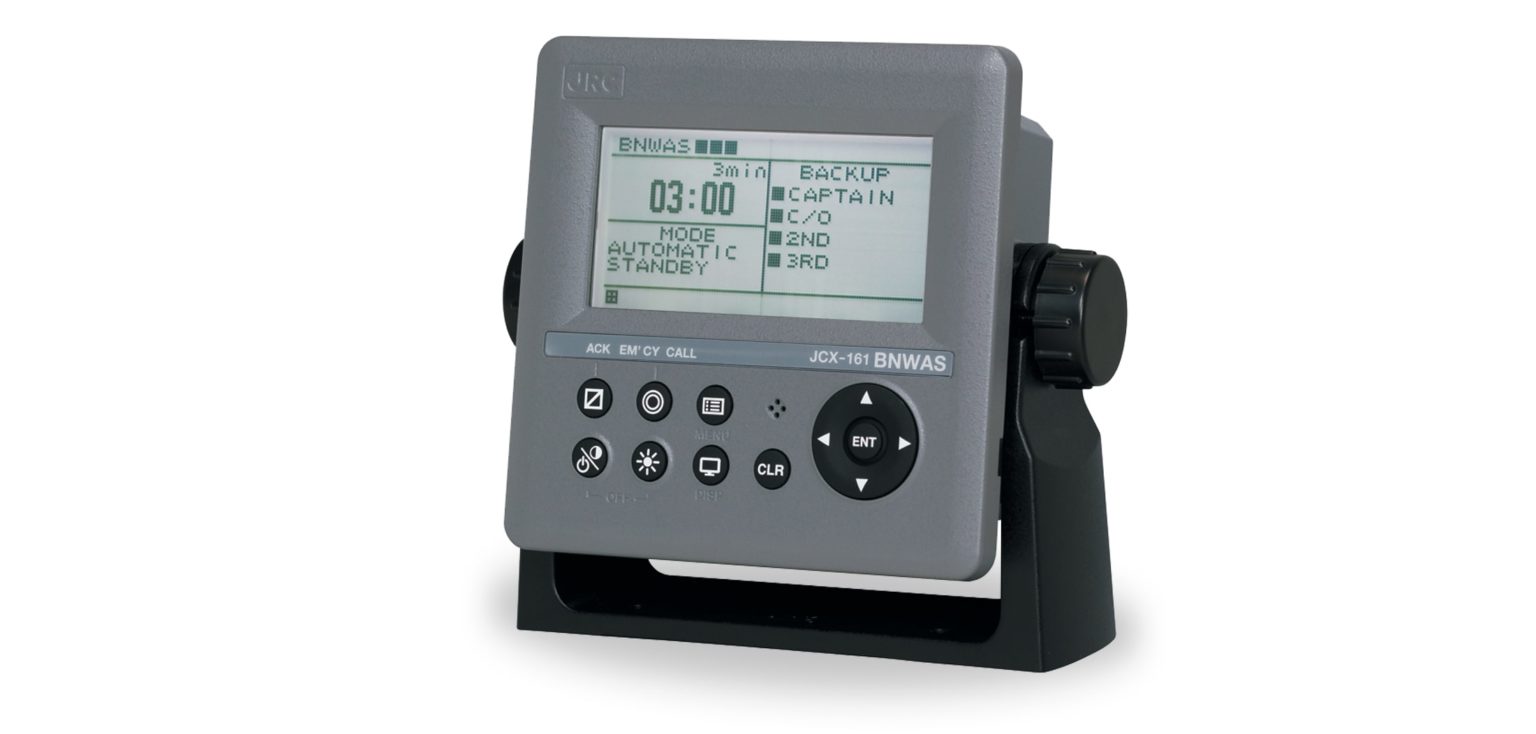BNWAS
MONITORING THE PRESENCE OF WATCH OFFICERS

Features
The Bridge Navigational Watch Alarm System (BNWAS) main purpose is to monitor the presence of watch officers and their alertness for early detection of unsafe sailing conditions.

Dual color LED backlight
The JCX-161 incorporates many display modes readily available on a highly visible 4.5-inch LCD display. Besides the display being fully dimmable and having backlit keys, it features dual LED backlight (white and orange), making it easy to operate in various light settings on the bridge.
Calling functions
Also available on the unit is the emergency call function which triggers all devices (buzzers) to activate. In addition, officer call also available which provides audible notice for backup officer at 2nd stage alarm.
Accessories
Along with our introduction of the new JCX-161, we introduce new accessories that compliments our unified design approach.

Operation modes
The unit has automatic and manual operation modes. While the ship’s heading TCS or HCS is active, the set period countdown operates automatically. In case you turned on the system to operate manually countdown operates continuously. When ship is in anchorage the unit can be turned off, however emergency calls, other call functions and bridge alarm transfer are still operable.
Uniform operation
In keeping with the company’s philosophy of an easy to use Man Machine Interface, the new generation displays have allowed JRC’s engineers to develop an exciting new software approach for uniform operation.

Motion sensor
An optional infrared motion sensor removes the need for the officer to manually press a button to stop the alarm. The sensor detects movement of the officer, which, once detected, will not allow the alarm to trigger.
No flush mount kit
With JRC’s new design approach, a flush mount kit is not required and screws are nicely concealed behind the front cover.
Remote Maintenance System (RMS)
JRC has the ability to cost-effectively monitor performance and functionality of the JCX-161 while at sea, significantly reducing downtime and maintenance cost. To establish RMS connection at sea maintenance server (JRC VDR) and satellite communications (JRC FB) are required onboard.
Resetting is easy
The system has a range of standard (and optional) possibilities to reset the timer for visual indication and audible alarm. On the display you can reset the alarms and a maximum of 6 reset buttons can be connected, regardless of normal or waterproof type. Movement detection by motion sensor resets the alarms but also when the BNWAS is connected to other navigation equipment such as radar (JMA-9100) or ECDIS (JAN-901B), the alarm is reset when the officer physically operating the controls.
Alarms
The user can define an interval sequence of between 3 and 12 minutes. This will only give a visual indication. The alarm can be reset at any point in time. There is a visual indicator of the time countdown. After the preset interval, an alarm sequence will go into effect.

Manage other alarms
When any connected equipment alarm is activated, the BNWAS displays a list of alarm information automatically. When the officers fails to acknowledge within pre-set intervals, visual and audible alarms will be generated in the wheelhouse and other crew spaces as necessary.
Connect to VDR
The system can output system status and alarm situation to the VDR through serial interfacing using the NMEA0183 ALR sentences.
IMO
BNWAS will be mandatory for all new build passenger ships and cargo ships above 150GT constructed on and after 1 July 2011 and will be phased in for existing ships over the coming years.
